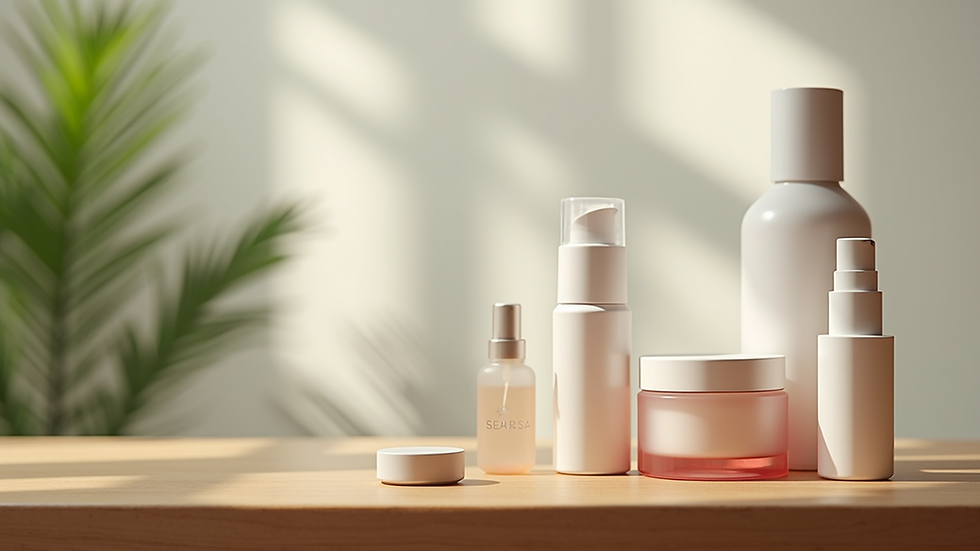Understanding the Role of an Aesthetic Nurse Practitioner
- Paige Schwab
- Oct 21
- 3 min read
In recent years, the field of aesthetic medicine has grown rapidly, creating new opportunities for healthcare professionals. Among these, the role of an aesthetic nurse has become increasingly important. This specialized nurse combines medical knowledge with artistic skill to help patients achieve their desired appearance through non-surgical cosmetic procedures. This article explores the various aspects of this profession, providing practical insights into what it entails, the responsibilities involved, and how one can succeed in this rewarding career.
The Role of Aesthetic Nurse: What Does It Involve?
An aesthetic nurse plays a crucial role in the delivery of cosmetic treatments that enhance a patient’s appearance. These treatments can range from Botox injections and dermal fillers to laser therapies and chemical peels. The nurse’s responsibilities include assessing patients’ needs, administering treatments safely, and providing aftercare advice.
Some key duties include:
Conducting thorough patient consultations to understand their goals and medical history.
Developing personalized treatment plans.
Performing cosmetic procedures with precision and care.
Monitoring patient progress and managing any side effects.
Educating patients on skincare routines and maintenance.
This role requires a blend of clinical expertise and an eye for aesthetics. Nurses must stay updated on the latest techniques and products to offer the best care. They also need excellent communication skills to build trust and ensure patients feel comfortable throughout their treatment journey.

Key Skills and Qualifications for an Aesthetic Nurse
To become an aesthetic nurse, certain qualifications and skills are essential. Typically, candidates start as registered nurses (RNs) and then pursue additional training in aesthetic medicine. Certification programs and workshops provide hands-on experience with cosmetic procedures and patient management.
Important skills include:
Clinical proficiency: Mastery of injection techniques, skin assessment, and emergency response.
Attention to detail: Precision is critical to achieve natural-looking results and avoid complications.
Artistic sense: Understanding facial anatomy and symmetry helps in customizing treatments.
Patient care: Empathy and clear communication improve patient satisfaction and safety.
Business acumen: Many aesthetic nurses work in private practices or own their clinics, so knowledge of marketing and client management is beneficial.
Continuing education is vital in this field. New technologies and products emerge regularly, and staying informed ensures nurses provide safe and effective treatments.

How to Make $200,000 as an NP?
Achieving a high income as a nurse practitioner (NP) in aesthetics is possible with the right strategy. Here are some actionable steps to maximize earnings:
Specialize in high-demand procedures: Focus on popular treatments like Botox, fillers, and laser therapies that attract many clients.
Gain advanced certifications: Additional credentials can justify higher fees and attract more patients.
Build a strong client base: Excellent results and patient referrals are key to growing your practice.
Work in upscale locations: Clinics in affluent areas often charge premium prices.
Offer package deals and memberships: Encourage repeat visits and steady income.
Expand services: Include complementary treatments such as skincare consultations and product sales.
Leverage social media marketing: Showcase your work and engage with potential clients online.
By combining clinical expertise with smart business practices, an aesthetic nurse practitioner can significantly increase their earning potential.

Challenges and Rewards of Being an Aesthetic Nurse
Like any healthcare profession, working as an aesthetic nurse comes with challenges. Managing patient expectations can be difficult, especially when clients desire unrealistic results. There is also the risk of complications, which requires vigilance and quick problem-solving.
However, the rewards are substantial:
Job satisfaction: Helping patients feel confident and happy with their appearance is deeply fulfilling.
Creative expression: The role allows nurses to apply artistic skills in a medical context.
Flexible work environment: Many aesthetic nurses enjoy flexible schedules and the option to work independently.
Financial benefits: Competitive salaries and opportunities for entrepreneurship make this a lucrative career.
To thrive, nurses must maintain professionalism, continue learning, and prioritize patient safety above all.
Future Trends in Aesthetic Nursing
The field of aesthetic nursing is evolving rapidly. Emerging technologies such as advanced laser devices, regenerative medicine, and personalized skincare are shaping the future of cosmetic treatments. Additionally, there is a growing emphasis on holistic approaches that combine aesthetics with overall wellness.
Some trends to watch include:
Minimally invasive procedures: Increasing demand for treatments with little downtime.
Telemedicine consultations: Virtual assessments and follow-ups becoming more common.
Integration of AI: Tools that assist in treatment planning and outcome prediction.
Sustainability: Eco-friendly products and practices gaining popularity.
Nurses who adapt to these trends and embrace innovation will remain at the forefront of the industry.
For those interested in pursuing this career path, learning more about the aesthetic nurse practitioner role can provide valuable guidance and inspiration. This profession offers a unique blend of healthcare and artistry, making it an exciting and rewarding choice for many nurses.





Comments